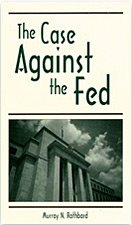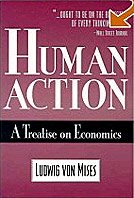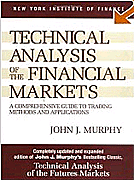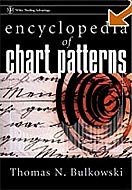Reg Howe: "Gold derivatives: options galore"
Reginald H. Howe, proprietor of Golden Sextant Advisors and consultant to GATA, has reviewed the Bank for International Settlements' semi-annual derivatives report and finds explosive growth in gold options. Howe also notes that foreign-owned gold has started to be withdrawn from the the New York branch bank of the Federal Reserve.
So, in his new essay, "Gold Derivatives: Options Galore," Howe writes: "Both the explosion in gold options and the resumed exports of foreign-earmarked gold suggest that managing the gold price is becoming an ever-more-difficult task. No surprise, then, that gold prices have turned sharply upward during the second half of the year. However, the price managers still have one thing operating in their favor: the apparent willingness of hedge funds and other supposedly sophisticated large players to make their bets on gold through paper derivatives, not the acquisition of physical metal."
So, in his new essay, "Gold Derivatives: Options Galore," Howe writes: "Both the explosion in gold options and the resumed exports of foreign-earmarked gold suggest that managing the gold price is becoming an ever-more-difficult task. No surprise, then, that gold prices have turned sharply upward during the second half of the year. However, the price managers still have one thing operating in their favor: the apparent willingness of hedge funds and other supposedly sophisticated large players to make their bets on gold through paper derivatives, not the acquisition of physical metal."
November 30, 2007 (RHH).
Gold Derivatives: Options Galore
On November 21, 2007, the Bank for International Settlements released its regular semi-annual report on the over-the-counter derivatives of major banks and dealers in the G-10 countries and Switzerland for the period ending June 30, 2007. The total notional value of all gold derivatives came in at $426 billion, $37 billion less than previously reported for year-end 2006 but a whopping $214 billion less than the revised year-end figure. Period-end gold prices increased from $636 to $651 (London PM). Gross market values fell to $47 billion from an unrevised $56 billion.
As detailed in table 22A, forwards and swaps rose marginally to $141 billion from $139 billion, also unrevised. Options, however, fell from a revised $501 billion to $285 billion. The previously reported year-end 2006 figure for options was $324 billion, $177 billion less than the revised number. In the past, although there have been occasional minor adjustments in the data for the prior six months, none have been close to this magnitude.
Converted to metric tonnes at period-end gold prices and based on the revised data for year-end 2006, total gold derivatives rose by nearly 8,200 tonnes in the last half of 2006, and then fell by 10,495 tonnes in the first half of 2007. Forwards and swaps, which declined just over 700 tonnes in the second half of 2006, fell another roughly 60 tonnes in the first half of 2007. Options, which rose almost 8,900 tonnes in the last half of 2006, fell nearly 10,900 tonnes in the first half of this year.
At the same time that it released its regular semi-annual report on the OTC derivatives of major banks and dealers in the G-10, the BIS also released the first part of its regular triennial survey on OTC derivatives of a wider universe of market participants from some 50 jurisdictions. This report, too, contained an eye-popping number. According to Table A, total gold derivatives over the three-year period rose from $359 billion at end-June 2004 to $1,051 billion at end-June 2007, or in tonnes at period-end gold prices, from 28,200 to 50,250.
The data is summarized graphically in the three charts below, updated from the prior commentary on this subject. For the G-10 and Switzerland, total forwards and swaps now stand at approximately 6,800 tonnes, options at 15,850 tonnes, and total gold derivatives at 22,650 tonnes. The triennial survey, or at least the first part of it, does not provide separate data for forwards and swaps and for options. Due to the wide intervals between these reports, the triennial totals are shown only in tonnes in the third chart.



The $177 billion upward revision in year-end 2006 OTC gold options equates to over 8,450 tonnes in notional value. According to an e-mail message from the BIS, "two reporting countries provided revisions" for year-end 2006, with "mainly one reporter" responsible for the adjustment to gold options. Since country data is confidential, the BIS declined to provide any further detail. However, to identify any single reporting country that might even under extraordinary circumstances be "mainly" responsible for an error of this magnitude is far from easy.
Data published annually by the Swiss National Bank shows total precious metals derivatives of all Swiss banks as of year-end 2006 at CHF 151 billion, or approximately US$123 billion at the year-end exchange rate (CHF 1.225 = US$1.00). Of this amount, CHF 91 billion (US$74 billion) were in options. Data published by the Office of the Comptroller of the Currency on the gold derivatives of U.S. commercial banks (primarily J.P. Morgan Chase, HSBC Bank USA and Citibank) shows total gold derivatives at year-end of $94 billion. What is more, the OCC reports this data quarterly, and neither the report for the first nor for the second quarter of 2007 shows any revisions to the 2006 year-end data.
Accordingly, the finger of suspicion with respect to the reporting snafu seems to point in the direction of one or more big U.S. investment banks, e.g., Goldman Sachs, which are not included in the OCC data. But whoever the culprit, the numbers themselves suggest that the gold options involved in the revisions have now been transferred to market participants outside the regular semi-annual reporting system but covered by the triennial survey.
Indeed, it would appear that these options were never intended to be picked up in the regular semi-annual report. One plausible hypothesis is that one or more big U.S. investment banks are effectively running large gold options books through non-reporting entities covered only in the triennial survey, and that due to errors of accounting, timing or otherwise, these banks were forced by their auditors to recognize on their own books at year-end gold options that they believed were on the books of others.
Another intriguing development of the past few months is the resumed outflow of foreign earmarked gold from the United States. From the end of 2003 through January of this year, there was virtually no change in the total amount of gold held under earmark at the New York Fed for foreign and international accounts, mostly foreign central banks. However, from February through September, the latest month for which figures are available, these accounts are down by a net 169 tonnes, from $8,967 to $8,737 million at $42.22/ounce, or from 6,606 to 6,437 tonnes.
Both the explosion in gold options and the resumed exports of foreign earmarked gold suggest that managing the gold price is becoming an ever more difficult task. No surprise, then, that gold prices have turned sharply upward during the second half of the year. However, the price managers still have one thing operating in their favor: the apparent willingness of hedge funds and other supposedly sophisticated large players to make their bets on gold through paper derivatives, not the acquisition of physical metal.
The reported figures indicate that the mountain of gold options now almost certainly exceeds 30,000 tonnes -- an amount roughly equal to the world's total claimed official gold reserves. How many of these options are cash settlement only? Have the bullion banks actually committed to delivering physical gold in anything like these notional amounts?
If so, they have put themselves and the fiat monetary system of which they are a part at a new level of risk, one scarcely hinted at in the ongoing unraveling of various forms of credit derivatives. Large players currently content to take paper cannot be expected to remain blind to its risks forever. When they finally awaken to the difference between claims on gold and physical possession of bullion itself, the world is likely to witness a bank run and gold rush of epic proportions.
Data published annually by the Swiss National Bank shows total precious metals derivatives of all Swiss banks as of year-end 2006 at CHF 151 billion, or approximately US$123 billion at the year-end exchange rate (CHF 1.225 = US$1.00). Of this amount, CHF 91 billion (US$74 billion) were in options. Data published by the Office of the Comptroller of the Currency on the gold derivatives of U.S. commercial banks (primarily J.P. Morgan Chase, HSBC Bank USA and Citibank) shows total gold derivatives at year-end of $94 billion. What is more, the OCC reports this data quarterly, and neither the report for the first nor for the second quarter of 2007 shows any revisions to the 2006 year-end data.
Accordingly, the finger of suspicion with respect to the reporting snafu seems to point in the direction of one or more big U.S. investment banks, e.g., Goldman Sachs, which are not included in the OCC data. But whoever the culprit, the numbers themselves suggest that the gold options involved in the revisions have now been transferred to market participants outside the regular semi-annual reporting system but covered by the triennial survey.
Indeed, it would appear that these options were never intended to be picked up in the regular semi-annual report. One plausible hypothesis is that one or more big U.S. investment banks are effectively running large gold options books through non-reporting entities covered only in the triennial survey, and that due to errors of accounting, timing or otherwise, these banks were forced by their auditors to recognize on their own books at year-end gold options that they believed were on the books of others.
Another intriguing development of the past few months is the resumed outflow of foreign earmarked gold from the United States. From the end of 2003 through January of this year, there was virtually no change in the total amount of gold held under earmark at the New York Fed for foreign and international accounts, mostly foreign central banks. However, from February through September, the latest month for which figures are available, these accounts are down by a net 169 tonnes, from $8,967 to $8,737 million at $42.22/ounce, or from 6,606 to 6,437 tonnes.
Both the explosion in gold options and the resumed exports of foreign earmarked gold suggest that managing the gold price is becoming an ever more difficult task. No surprise, then, that gold prices have turned sharply upward during the second half of the year. However, the price managers still have one thing operating in their favor: the apparent willingness of hedge funds and other supposedly sophisticated large players to make their bets on gold through paper derivatives, not the acquisition of physical metal.
The reported figures indicate that the mountain of gold options now almost certainly exceeds 30,000 tonnes -- an amount roughly equal to the world's total claimed official gold reserves. How many of these options are cash settlement only? Have the bullion banks actually committed to delivering physical gold in anything like these notional amounts?
If so, they have put themselves and the fiat monetary system of which they are a part at a new level of risk, one scarcely hinted at in the ongoing unraveling of various forms of credit derivatives. Large players currently content to take paper cannot be expected to remain blind to its risks forever. When they finally awaken to the difference between claims on gold and physical possession of bullion itself, the world is likely to witness a bank run and gold rush of epic proportions.
Labels: GATA, gold, market manipulation















![[Most Recent Quotes from www.kitco.com] [Most Recent Quotes from www.kitco.com]](http://www.kitco.com/images/live/t24_au_en_usoz_6.gif)
![[Most Recent Quotes from www.kitco.com] [Most Recent Quotes from www.kitco.com]](http://www.kitco.com/images/live/au_go_0030_ny.gif)
![[Most Recent Quotes from www.kitco.com] [Most Recent Quotes from www.kitco.com]](http://www.kitco.com/images/live/au_go_0365_ny.gif)
![[Most Recent Quotes from www.kitco.com] [Most Recent Quotes from www.kitco.com]](http://kitconet.com/charts/metals/silver/t24_ag_en_usoz_4.gif)

















0 ΣΧΟΛΙΑ (COMMENTS):
Post a Comment
<< Home